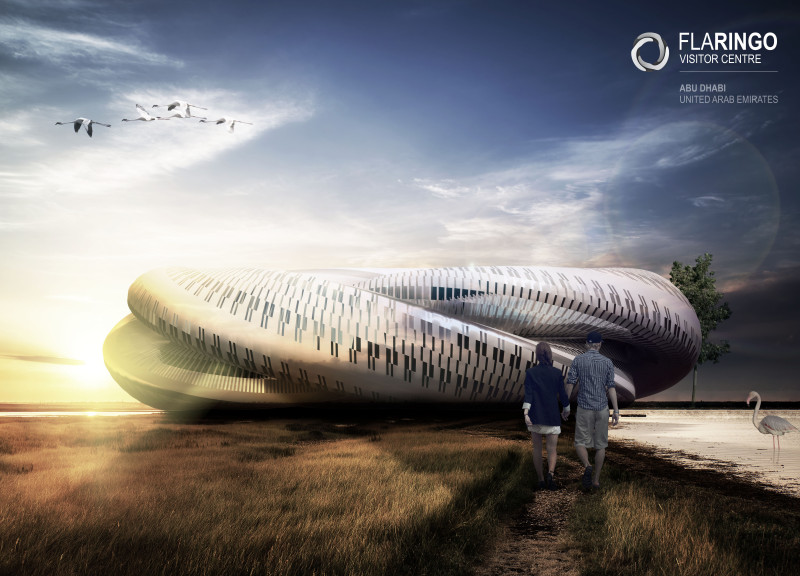5 key facts about this project
The Flaringo Visitor Centre is located in Abu Dhabi, United Arab Emirates. It serves as a facility for wildlife observation and environmental education. The design centers around the concept of the Möbius strip, which reflects ideas of continuity and flow. This building aims to connect visitors with nature while providing an informative experience.
Design Concept
The architectural approach relies on geometric principles to create movement within the structure. The Möbius strip influences the layout, offering a circulation path that allows visitors to enter, explore the exhibits, and return to their entry point without barriers. This design enhances exploration and engagement, making the educational aspects of the centre more effective.
Central Courtyard
In the middle of the visitor centre, a semi-open courtyard offers a space for observing wildlife. This area connects visitors directly with the environment, highlighting the balance of local ecosystems. It also functions as an educational platform, where people can learn about the biodiversity found in the Al Wathba Reserve. This reinforces the centre's aim to promote awareness of conservation efforts.
Materiality and Sustainable Practices
Local materials play a significant role in the construction of the Flaringo Visitor Centre. "Sarooj," a traditional building material made from mud and thatch, is used for structural layers. Palm wood serves as an important component in load-bearing elements, practical while maintaining a simple aesthetic. These material choices demonstrate a commitment to sustainability and regional practices.
Environmental Responsiveness
The building's shape and position are carefully planned to enhance shading and lower energy needs. About 60% of the structure stays shaded during peak sunlight, reducing cooling requirements in the warm desert climate. This design consideration not only improves visitor comfort but also aligns with eco-friendly building practices.
The design's fluidity is expressed through pathways and forms that guide visitors. This enhances their connection to the surrounding landscape while providing a clear route through the centre's offerings.






















































